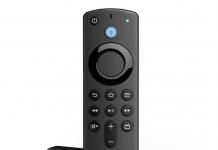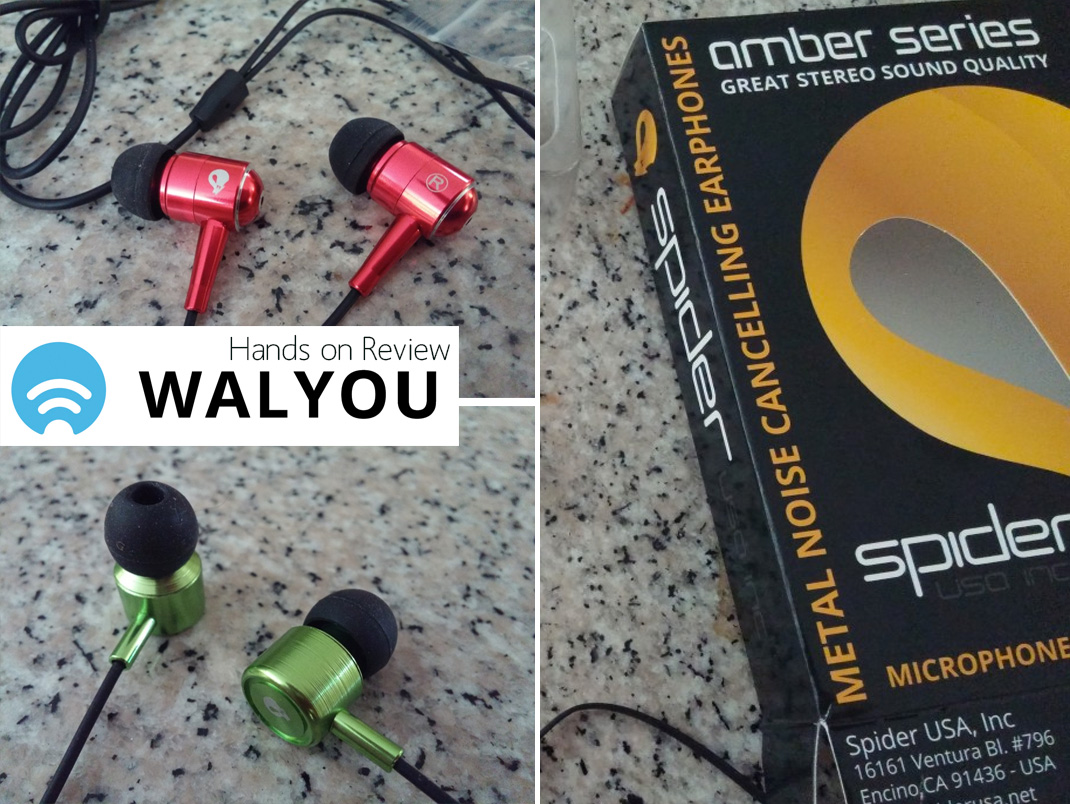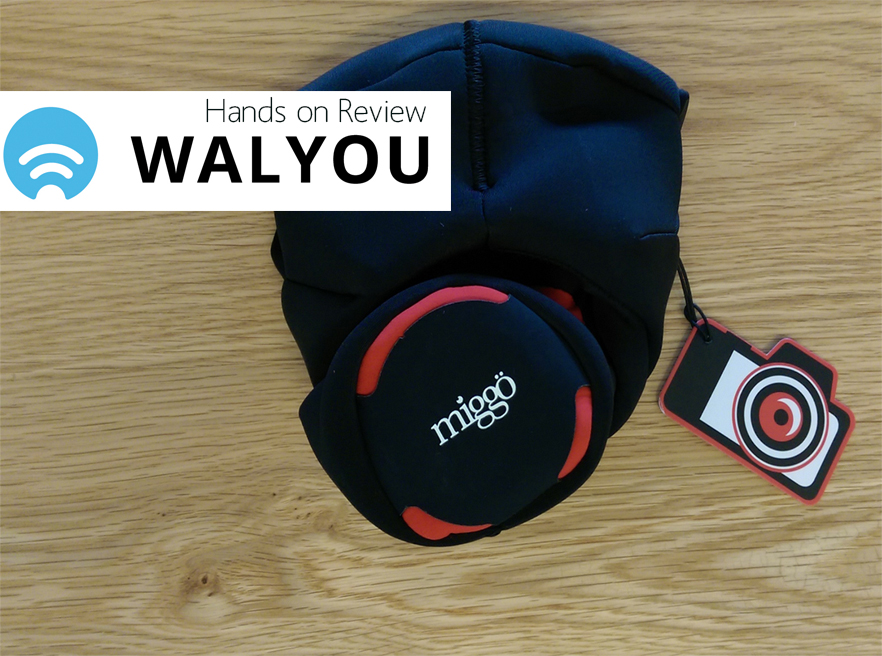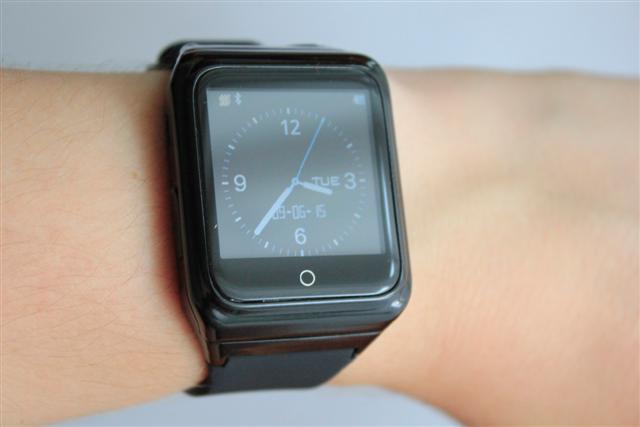Using an old generation chipset definitely seems like a step taken backwards, but Ulefone Be Pure has plenty of features that could lure you in.
1. Contents of the Box
2. Accessories
3. Accessories
4. Technical Specs
5. Connectivity
6. Software
7. Performance Assessment
7.1. Benchmarks
7.2. Image Quality
7.3. Battery Life
8. Price and Availability
9. Conclusions
Contents of the Box
The white box Ulefone Be Pure comes in couldn’t be described otherwise as basic. There’s not much on it, other than the manufacturer’s logo in the front and the specs of the device on the back.
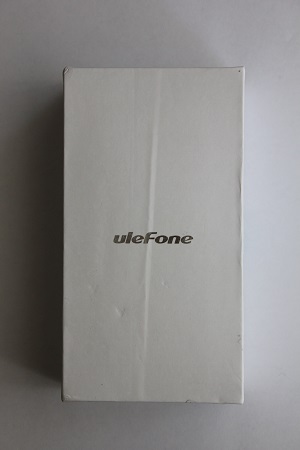
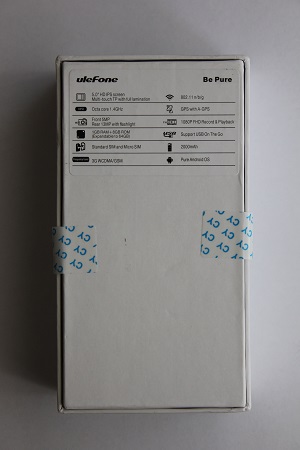
Besides the phone itself, the box includes a user’s guide in English, a charger rated for 5V/1A, a USB to microUSB cable for charging and data transfers, and a 3.8V Li-Po battery rated with a capacity of 2,000mAh.
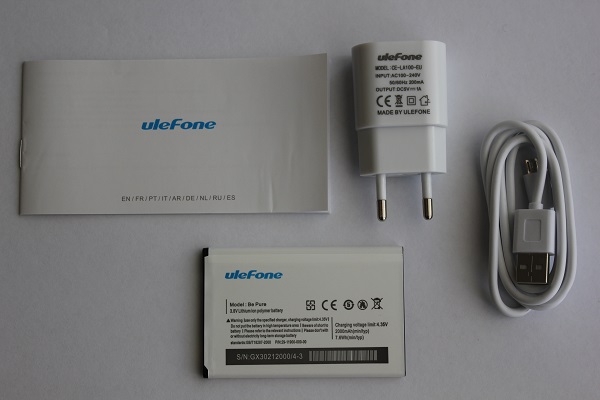
Accessories
Since this is a lower-end model, Ulefone did not create many accessories for it, and other OEMs did not show any interest, either. At the time of writing, the only available accessory was a windowed case made from PU leather that cost around $9.
Design and Build Quality
Design-wise, Be Pure doesn’t bring anything revolutionary to the table. It measures 144×71×8.89mm and weighs 130g, fact that makes it quite pleasant to hold in hand. The 5″ display also helps with the portability, not to mention that, considering the HD resolution, the 293ppi pixel density is quite OK.
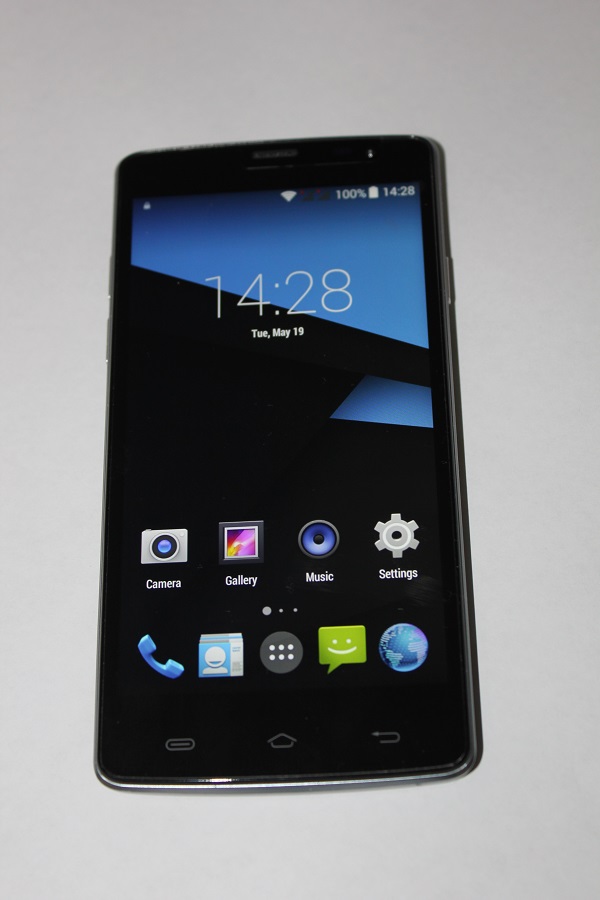
Below the display there are the three capacitive buttons we came to expect in an Android smartphone. The white backlight of these buttons is quite pleasant, and doesn’t distract the users’ attention.

The smartphone’s perimeter is metallic, and all the buttons and connectors are located where you would expect them to be. At the top, Be Pure has a 3.5mm audio jack for earphones, shortcut keys (a la Pressy or Xiaomi Mi Key), or IR transmitters, along with a microUSB port for charging and data transfers.
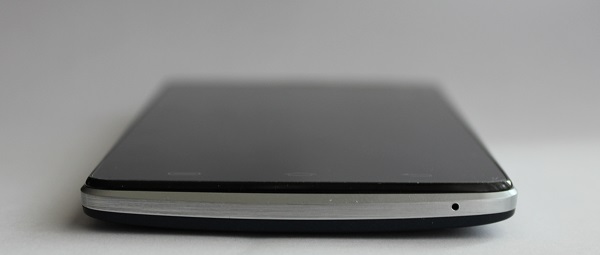
At the bottom, there’s only a hole for the microphone. The volume buttons are found on the left side, while the power button is placed on the right side of the smartphone.
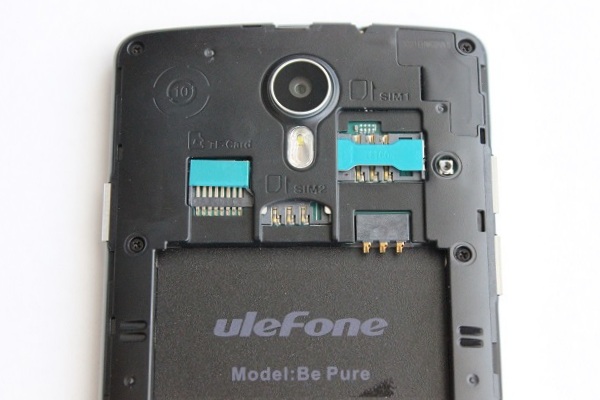
Under the back cover, you can notice the two SIM slots, a microSD slot and various antennas. Below the back camera there seems to be room for a dual LED flash, but in fact, only one LED is present.
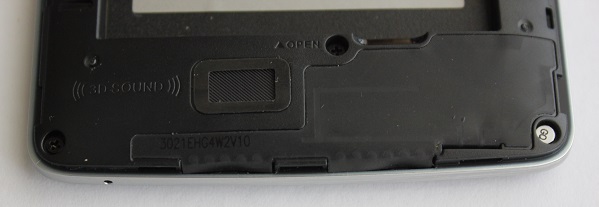
Ulefone advertises the external speaker as having 3D Sound, and while the output doesn’t disappoint in clarity, you shouldn’t expect an authentic surround effect from such a small speaker.
Technical Specs
Powering Ulefone Be Pure is Mediatek’s MTK6592M chipset that includes an octa-core CPU clocked at 1.4Ghz, along with a Mali450 GPU running at 600Mhz. These specs may have been great last year, but some of the recent apps and games will definitely unveil this 32-bit chipset’s limitations.
Running multiple apps at the same time is not recommended on this device, since it only has 1GB of RAM. The internal memory of just 8GB won’t allow you to install many games, anyway, and you also need to take into account that some of that storage is occupied by the operating system.
Connectivity
As expected from the MT6592M chipset, there’s no 4G connectivity in the Be Pure. Apart from that, the smartphone has Wi-Fi b/g/n, Bluetooth 4.0, GPS and A-GPS, as well as Hot Knot, which is Mediatek’s own version of NFC.
From my experience, most connectivity options worked just fine, with the exception of GPS, which is known to have issues in devices based on Mediatek’s chipsets. However, there are fixes that could be used for improving GPS accuracy.
Software
The manufacturer is promoting a “pure Android experience” with this device, hence the Be Pure name. Below are screenshots of the home screen and app drawer taken shortly after the first boot, and these images attest the lack of bloatware.
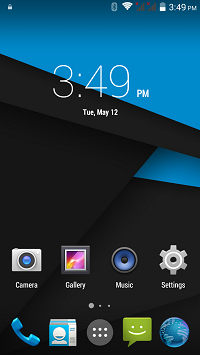
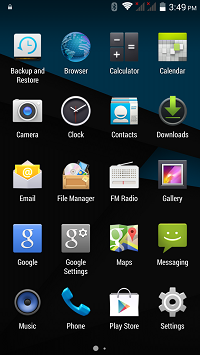
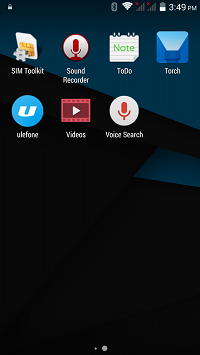
The device is running Android 4.4.2, even though Ulefone showed Android 5.0 Lollipop in some of the promotional images. The fact there’s no OTA update to Lollipop is a disappointment, and while Mediatek is to blame for not sharing the source and the drivers, I also think Ulefone’s move is misleading, and could be interpreted as false advertising.


Rooting the Be Pure is quite easy, and can be done in just a few easy steps using the Kingo Root software for Windows.
Performance Assessment
While it’s real-life performance that matters, there are still plenty of people out there who rely on synthetic tests and benchmarks to pick one smartphone over another. Granted, the Be Pure isn’t as blazing fast as its 64-bit counterparts, but I did not experience any hiccups, either.
Benchmarks
Considering the outdated chipset, the benchmark scores shouldn’t surprise anyone. Be Pure gets a bit over 28,000 points in Antutu, where it ranks above HTC One, but below LG G3.
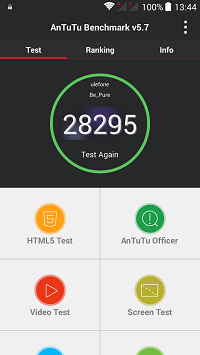
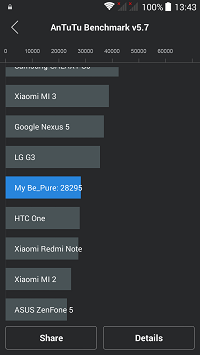
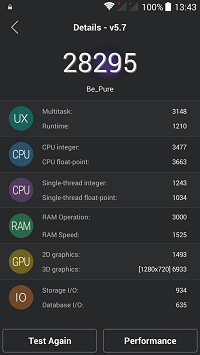
GeekBench 3 results show more of the same, with some mediocre single-core performance. Multi-core performance doesn’t impress, either.
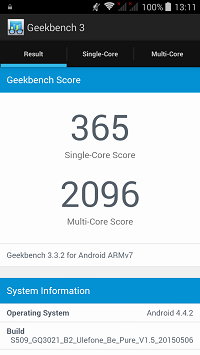
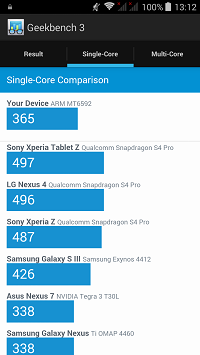
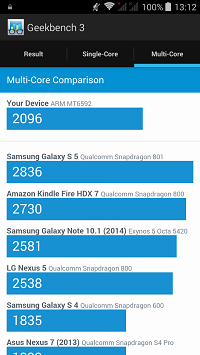
Vellamo Mobile Benchmark emphasizes Be Pure’s low performance, even when compared to devices that were launched two or three years ago.
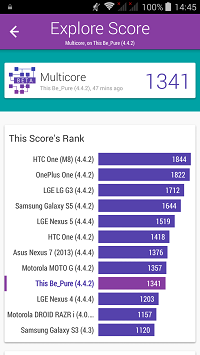
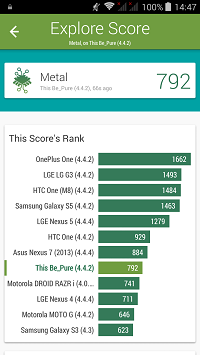
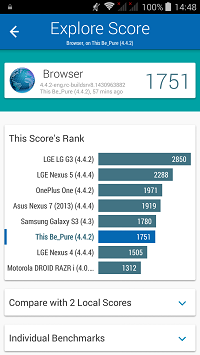
I consider Quadrant to be a very outdated benchmark, considering the devices it compares the Be Pure to, but in case you are interested, here are the results, along with 3D Mark score.
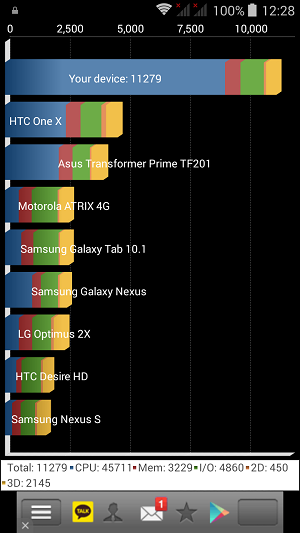
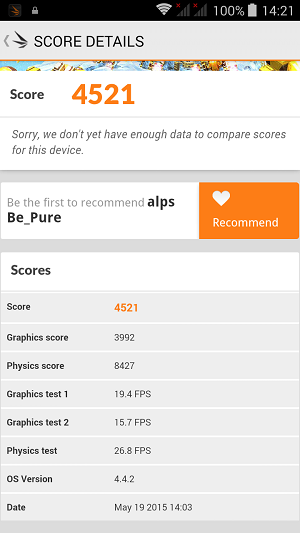
GPU performance doesn’t seem to be very bad, as the device scored an average of 53.6 frames per second in Epic Citadel.
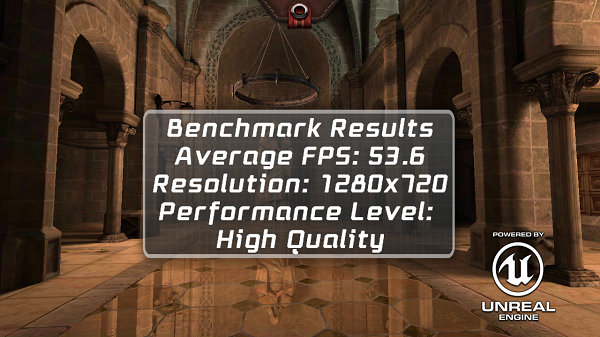
The result seems to be even better in Nenamark 2, where Be Pure managed to get 54.3 fps.
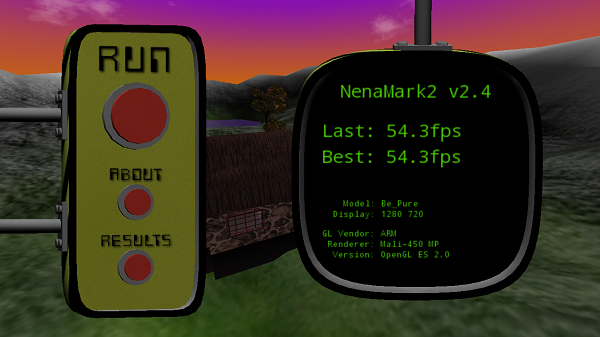
And finally, here are Be Pure’s GFX OpenGL scores.
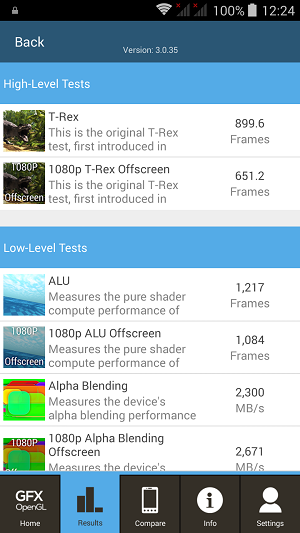
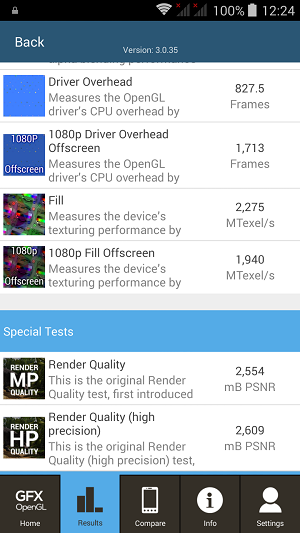
Image Quality
Some praised Ulefone Be Pure’s camera as being one of the best available on sub-$130 smartphones. To be frank, I wasn’t as impressed with it as others, and found photos taken with the 13MP back camera to lack sharpness. On top of that, there were plenty of blown-out highlights in most of the pictures taken.
The manufacturer even admitted on the product’s Web page that the resolutions are interpolated, and the cameras have in fact 8 and 2MP, respectively.
Battery Life
I tested the battery using the GeekBench 3 battery benchmark, and the result baffled me.
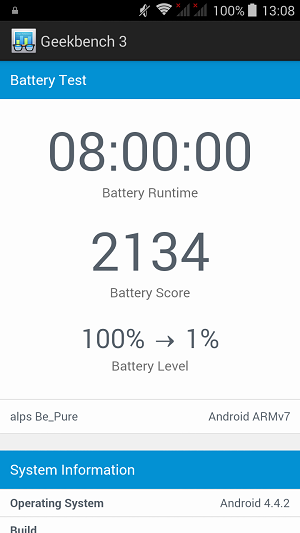
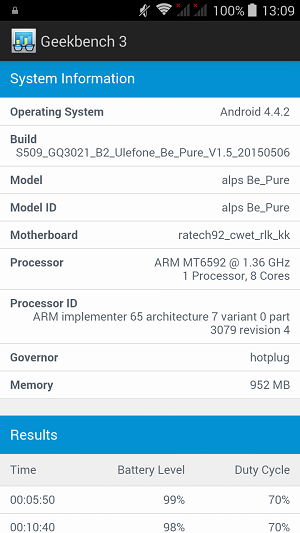
Be Pure is getting 8 hours straight of screen-on time, which is quite impressive for a 2000mAh battery. MTK6752, the Mediatek chipset that powers most of the current Chinese flagships, is said to be more power-efficient than the 32-bit SoCs, but this particular smartphone seems to prove otherwise.
In real-life scenarios, you can expect around two days of stand-by time with Wi-Fi turned on at all times, and a bit over 6 hours of screen-on time. Obviously, using GPS software or gaming will lower battery life considerably.
Price and Availability
Ulefone Be Pure is available in dark blue and white on GearBest for $129.99, or for $112.98, if you apply the coupon code BEPURE at checkout.
Conclusions
While this phone may have some redeeming aspects, such as the metal frame, the pixel density and the battery life, from the price perspective, it doesn’t stand a chance against 64-bit smartphones with metal body designs that cost less than this one. Not everyone is looking to own a flagship, and not everyone can afford one, but when it comes to buying a mid-ranger, it’s probably better to look at models that aren’t based on old chipsets.
Be social! Follow Walyou on Facebook and Twitter, and read more related stories about Xiaomi Mi 4i, or Huawei P8 Lite.












